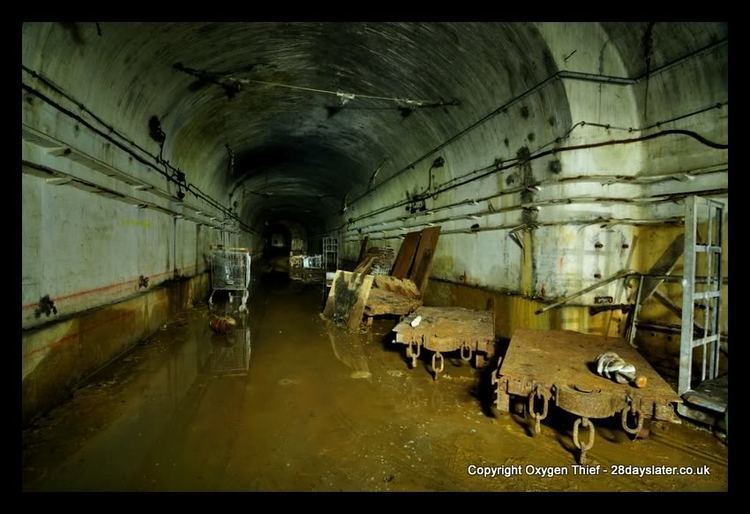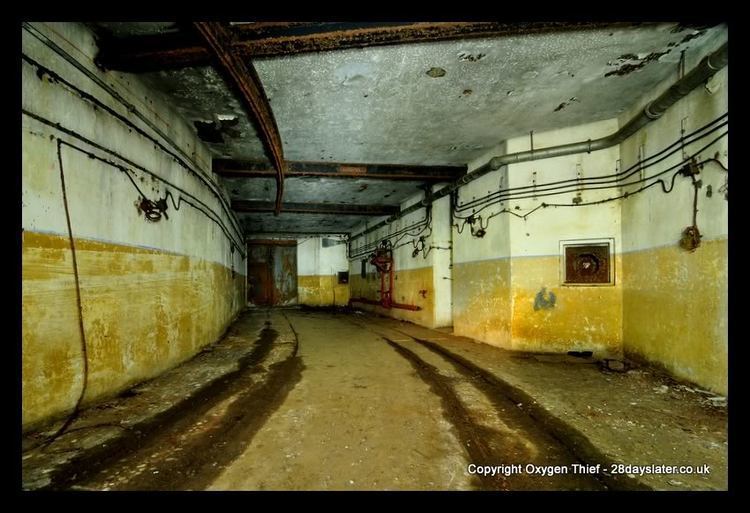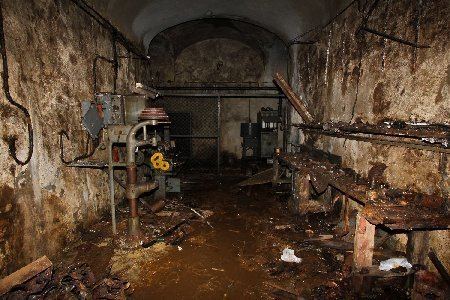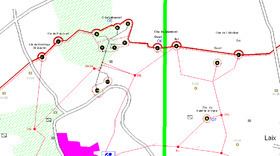Built by CORF | In use Abandoned | |
 | ||
Materials Concrete, steel, deep excavation Similar Ouvrage Bréhain, Ouvrage Molvange, Ouvrage Kobenbusch, Ouvrage Soetrich, Ouvrage Métrich | ||
Ouvrage Latiremont is a gros ouvrage of the Maginot Line, located in the Fortified Sector of the Crusnes, sub-sector of Arrancy. It lies between the gros ouvrage Fermont and the petit ouvrage Mauvais Bois, facing Belgium. The village of Doncourt-Cités is nearby. Latiremont was active in 1939-1940, coming under direct attack in late June 1940. It surrendered to German forces on 27 June. After renovations during the Cold War, it was abandoned.
Contents

Design and construction

The site was surveyed by CORF (Commission d'Organisation des Régions Fortifiées), the Maginot Line's design and construction agency, in early 1931. Latiremont was approved for construction in May 1931. It was completed at a cost of 88 million francs by the contractor Monod of Paris. Latiremont was designed from the beginning as a gros ouvrage with casemate-mounted 75mm guns. A second phase was planned, to add 75mm and 135mm gun turret blocks. By the late 1930s resources had been allocated elsewhere, and the turret blocks were not built.

More than 1,200 metres (3,900 ft) of underground galleries connect the entries to the farthest block, at an average depth of 30 metres (98 ft). An "M1" magazine, arranged with parallel galleries connected by cross galleries, is located close to the ammunition entrance, while the underground barracks and utility areas are just inside the personnel entry. The gallery system was served by a narrow-gauge (60 cm) railway that continued out the ammunition entry and connected to a regional military railway system for the movement of materiel along the front a few kilometers to the rear. Several "stations" along the gallery system, located in wider sections of gallery, permitted trains to pass or be stored.
Description

Latiremont has two entrances and six combat blocks. Most of the blocks are in and around the Bois de Pracourt.

Unbuilt blocks:

Casemates and shelters
A series of detached casemates and infantry shelters surround Latiremont, including the:

None of these are connected to the ouvrage or to each other. The Casernement de Doncourt provided peacetime above-ground barracks and support services to Latiremont and other ouvrages in the area.
Manning
The 1940 manning of the ouvrage under the command of Commandant Pophillat comprised 21 officers and 580 men of the 149th Fortress Infantry Regiment. The units were under the umbrella of the 42nd Fortress Corps of the 3rd Army, Army Group 2.
History
See Fortified Sector of the Crusnes for a broader discussion of the events of 1940 in the Crusnes sector of the Maginot Line.From September 1939 to June 1940, Latiremont fired 14,452 75mm rounds and 4,234 81mm rounds at German forces and in support of neighboring units. It was not until June 1940 that Latiremont and Fermont were attacked were directly attacked by the German 161st Division, which brought 21 cm howitzers and 30.5 cm mortars to bear on 21 June. By this time, German units were moving in the rear of the Line, cutting power and communications. Heavy fire from Fermont and Latiremont repelled attacks. Firing continued until 25 June. Latiremont's garrison surrendered to the Germans on 27 June. In 1944 the area did not see significant fighting.
By 1951 work was proceeding on renovation of many of the northeastern ouvrages, including Latiremont, with the aim of restoring their combat capability to block a potential advance by the Warsaw Pact. Latiremont and Fermont were designated the môle de Crusnes, a fortified strongpoint. After the establishment of the French nuclear strike force, the importance of the Line declined
Present status
Latiremont is abandoned, but secured. It has served as a source of material for Maginot museums and has suffered from water ingress, staining floors and walls.
